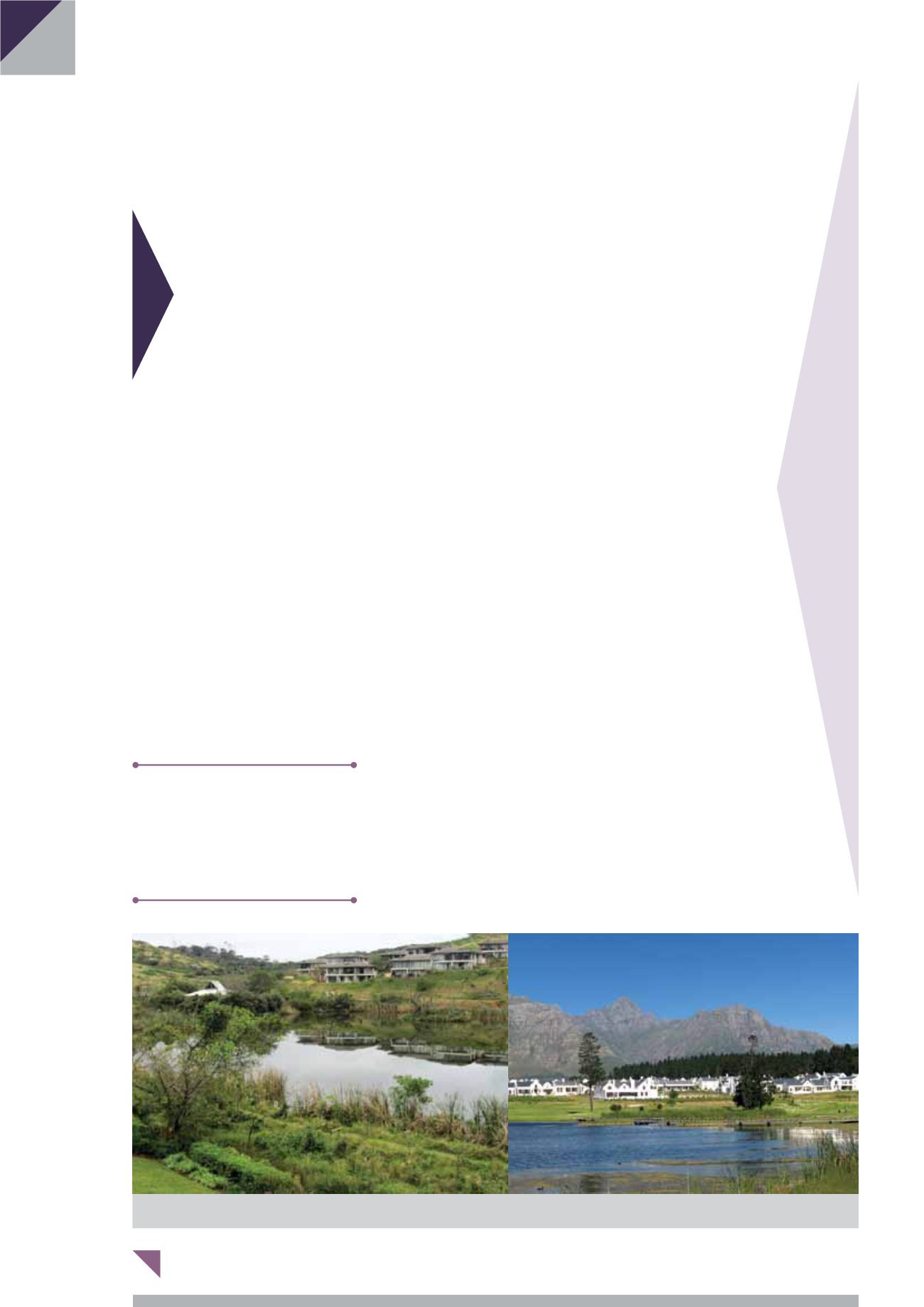
June 2013
CONSTRUCTION WORLD
20
Compared to certain segments
of the golf estatemarket in the
United States, South Africa’s
golf estate market overall
has fared somewhat better,
says Dr Andrew Golding, CE
of the Pam Golding Property.
property
“FROM 1990 TO 2003 SOME
3 000 new
courseswere built in theUnited States, boost-
ing the total number of courses nationally
by 19% and costing about USD20-billion,
according to the National Golf Foundation.
However, soon after that the sport began to
lose its allure and since 2005 over 350 golf
courses closed,”he says.
“Compounding the problem, some real
estate developers in the US had not consid-
ered the viability of the golf courses them-
selves. A number of these courses, designed
by brand-name golf course architects, were
championship level and too difficult for the
average player. They took a long time to play
and cost millions a year tomaintain, pushing
up annual dues. Across the country, about
2 000 of the 16 000 golf courses are‘financially
distressed’ and estimates are that 4 000 to
5 000 golf courses will be in financial danger
if they do not change their model. Some de-
velopers are recasting their golf communities
to appeal to a broader band of home buyers,
including more families and young people.”
Dr Golding says here in South Africa we
find both similarities and differences. He
says somewhat like the general residential
market, the South African golf estate market
is easily separated intometropolitan andnon-
metropolitan markets. “Consider Steenberg,
De Zalze and Atlantic Beach Estate in the
Cape, Mount Edgecombe, Zimbali and Sim-
bithi in KwaZulu-Natal and Dainfern, Silver
Lakes and Woodhill in Gauteng to name
but a few and you find these golf estates
are successful nodes in densely populated
residential suburbs. Froma property perspec-
tive, their performance has beenmore or less
recession-proof and actually very impressive,
especially when one compares property val-
ues in these estates to the surrounding areas.”
He says Zimbali and Simbithi are good
examples of this – both are significant estates;
Simbithi with1 800opportunities andZimbali
1 200. Ninety-five percent of both estates
are sold out, with Zimbali, being a more
mature development, enjoying 90%
completion of homes. Both are situated in
the Ballito area, where the total market sales
turnover in 2012 was R1,3-billion. Together,
Simbithi and Zimbali concluded sales in the
region of R800-million for the year, which is
two-thirds of the entire Ballitomarket. Of note
is that Simbithi land prices rose by 30-40%
since 2007, in themidst of a serious recession.
“Another excellent example of this typi-
cal golf estate ‘phenomenon’ is Cape Town’s
Steenberg Estate, which is listed as the
fifth most expensive place to live in South
Africa. There is a 540% difference in the aver-
age property value between a Steenberg
home and one that is just beyond its gate
in the suburb of Tokai. Similarly, De Zalze, a
380 erven estate, which has actually become
a suburb of Stellenbosch in the Cape Wine-
lands, has achieved consistent growth during
the quieter period since 2007 aswell as record
prices in excess of R20-million for individual
properties in 2008 and 2009,”says Dr Golding.
“Generally golf estates which are not
situated in or close to major metropolitan
areas have experienced more challenging
times. With the economic recession impact-
ing negatively on the purchase of holiday
homes, leisure destination golf estates came
under considerable pressure. Some estates
are simply too remote and not close enough
to metropolitan areas where statistically one
would find a higher demographic of wealth
to support not only the holiday home mar-
ket, but even just the estates’ amenities. The
hardest hit has been those inland or country
destinations which, during a recession, will
unfortunately take second place against
coastal property in the same category.”
Dr Golding says it appears that in South
Africa, the market for golf estate opportuni-
ties outside of metropolitan areas are limited,
not only from an availability perspective
but also in terms of the bulk infrastructure
contribution levies that are required upfront
by municipalities.
“For example, why should plots on golf
courses be so large? Is there any reason why
duplex style housing should not be devel-
oped around a municipal or public course
that has not been designed by a big name?
Perhaps we need to look for new opportuni-
ties in the golf property environment. An
excellent, up to the minute example is Steyn
City in northern Johannesburg, which will
provide 11 000 housing units, the best of
which are only on the perimeter of the new
golf course. The golf course itself greatly im-
proves the environment which is transformed
fromamixture of floodplain and quarry to an
Eden in comparison,”concludes Dr Golding.
●
LEFT:
Simbithi in KwaZulu-Natal.
RIGHT:
De Zalze, a 380 erven estate, has become a suburb of Stellenbosch.
SA’s golf estate market has proven
relatively resilient
Together,SimbithiandZimbali
concluded sales in the region
of R800-million for the year,
which is two-thirds of the
entire Ballito market.


